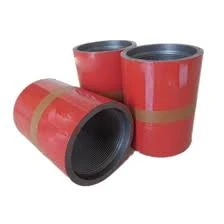- Afrikaans
- Albanian
- Amharic
- Arabic
- Armenian
- Azerbaijani
- Basque
- Belarusian
- Bengali
- Bosnian
- Bulgarian
- Catalan
- Cebuano
- Corsican
- Croatian
- Czech
- Danish
- Dutch
- English
- Esperanto
- Estonian
- Finnish
- French
- Frisian
- Galician
- Georgian
- German
- Greek
- Gujarati
- Haitian Creole
- hausa
- hawaiian
- Hebrew
- Hindi
- Miao
- Hungarian
- Icelandic
- igbo
- Indonesian
- irish
- Italian
- Japanese
- Javanese
- Kannada
- kazakh
- Khmer
- Rwandese
- Korean
- Kurdish
- Kyrgyz
- Lao
- Latin
- Latvian
- Lithuanian
- Luxembourgish
- Macedonian
- Malgashi
- Malay
- Malayalam
- Maltese
- Maori
- Marathi
- Mongolian
- Myanmar
- Nepali
- Norwegian
- Norwegian
- Occitan
- Pashto
- Persian
- Polish
- Portuguese
- Punjabi
- Romanian
- Russian
- Samoan
- Scottish Gaelic
- Serbian
- Sesotho
- Shona
- Sindhi
- Sinhala
- Slovak
- Slovenian
- Somali
- Spanish
- Sundanese
- Swahili
- Swedish
- Tagalog
- Tajik
- Tamil
- Tatar
- Telugu
- Thai
- Turkish
- Turkmen
- Ukrainian
- Urdu
- Uighur
- Uzbek
- Vietnamese
- Welsh
- Bantu
- Yiddish
- Yoruba
- Zulu
Understanding Casing and Tubing Connections in Oil and Gas Operations
Casing and Tubing Connections An Overview
In the exploration and production of oil and gas, the integrity of wellbore structures is paramount to ensuring efficient extraction while minimizing environmental risks. Two critical components in this regard are casing and tubing, both of which rely heavily on robust connections that can withstand extreme conditions encountered underground. This article delves into the types of casing and tubing connections, their significance, and the advancements in technology that aim to enhance their performance.
Casing Connections
Casing refers to the series of pipes that are used to line the wellbore, providing structural support and preventing the collapse of the borehole. There are various types of casing connections, each designed to accommodate specific operational pressures and environmental conditions. Some of the most common types include
1. API (American Petroleum Institute) Connections These are standardized connections that are widely used in the industry. API connections are known for their simplicity and reliability, making them suitable for a variety of applications.
2. Premium Connections Unlike standard API connections, premium connections are engineered for high-pressure and high-temperature environments. They feature enhanced geometries and materials designed to improve sealing capabilities and resistance to wear and corrosion, making them ideal for challenging subsea conditions.
3. Threaded and Coupled Connections This conventional type of connection involves threading the casing pipes and using a coupling to join them. While threaded connections are relatively straightforward and cost-effective, they may not provide the same level of sealing as premium alternatives.
4. Welded Connections In specific applications, especially in shallow wells, welded connections can be used. They are created by welding the casing sections together, offering a robust and permanent solution. However, welding requires specialized equipment and skilled labor, which can increase operational costs.
Tubing Connections
casing and tubing connections

Tubing serves as the conduit through which hydrocarbons flow from the reservoir to the surface. Like casing, the integrity of tubing connections is critical in maintaining the operational efficiency of a well. Tubing connections can be categorized into similar types as casing connections
1. API Tubing Connections Standardized and widely used, API tubing connections are valued for their ease of installation and repair. These connections are economical and offer adequate performance in typical operating conditions.
2. Premium Tubing Connections These connections are designed for more stringent applications involving higher pressures and corrosive environments. They provide superior sealing capabilities and are often employed in advanced extraction methods, such as enhanced oil recovery.
3. Coupled Tubing Connections Some tubing systems utilize couplings to connect tubing sections. This method provides flexibility and ease of maintenance, though it may not be suitable for high-stress scenarios.
Technological Advancements
In recent years, there have been significant advancements in the technology surrounding casing and tubing connections. Innovations such as advanced metallurgy and coating technologies have improved the durability and corrosion resistance of these components. Additionally, the integration of digital technologies enables real-time monitoring of connection integrity. These innovations allow for predictive maintenance and reduce the risk of failures, thereby enhancing overall wellbore performance.
Conclusion
Casing and tubing connections are fundamental to the success of oil and gas operations, playing a crucial role in ensuring that wells can withstand the harsh conditions of subsurface environments. The choice of connection type is influenced by various factors, including well depth, pressure, and environmental conditions. As technology continues to advance, the industry can expect even more reliable and efficient solutions that cater to the demanding requirements of modern extraction techniques. Understanding the intricacies of casing and tubing connections ultimately leads to improved operational success and environmental stewardship in resource extraction.
-
Tubing Pup Joints: Essential Components for Oil and Gas OperationsNewsJul.10,2025
-
Pup Joints: Essential Components for Reliable Drilling OperationsNewsJul.10,2025
-
Pipe Couplings: Connecting Your World EfficientlyNewsJul.10,2025
-
Mastering Oilfield Operations with Quality Tubing and CasingNewsJul.10,2025
-
High-Quality Casing Couplings for Every NeedNewsJul.10,2025
-
Boost Your Drilling Efficiency with Premium Crossover Tools & Seating NipplesNewsJul.10,2025







